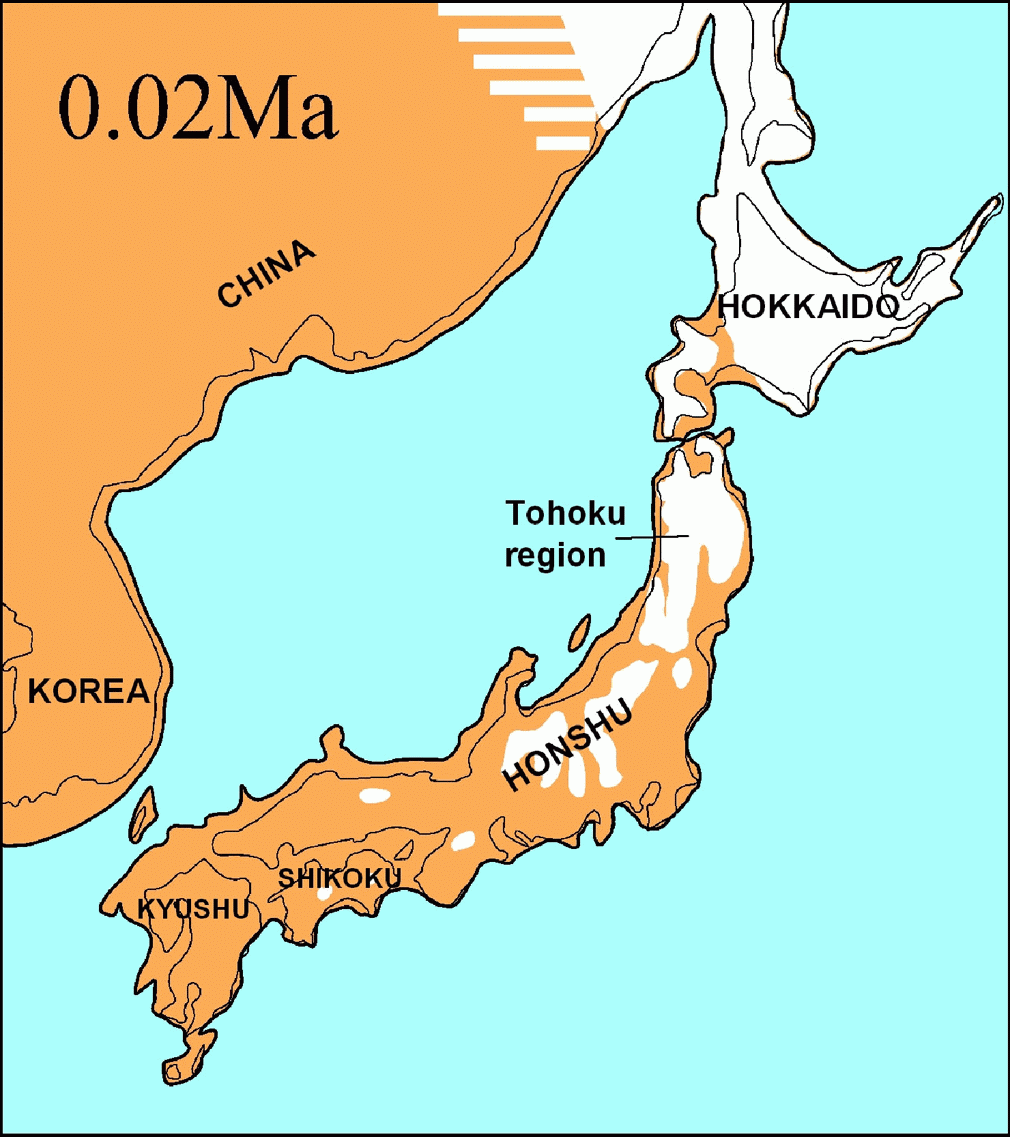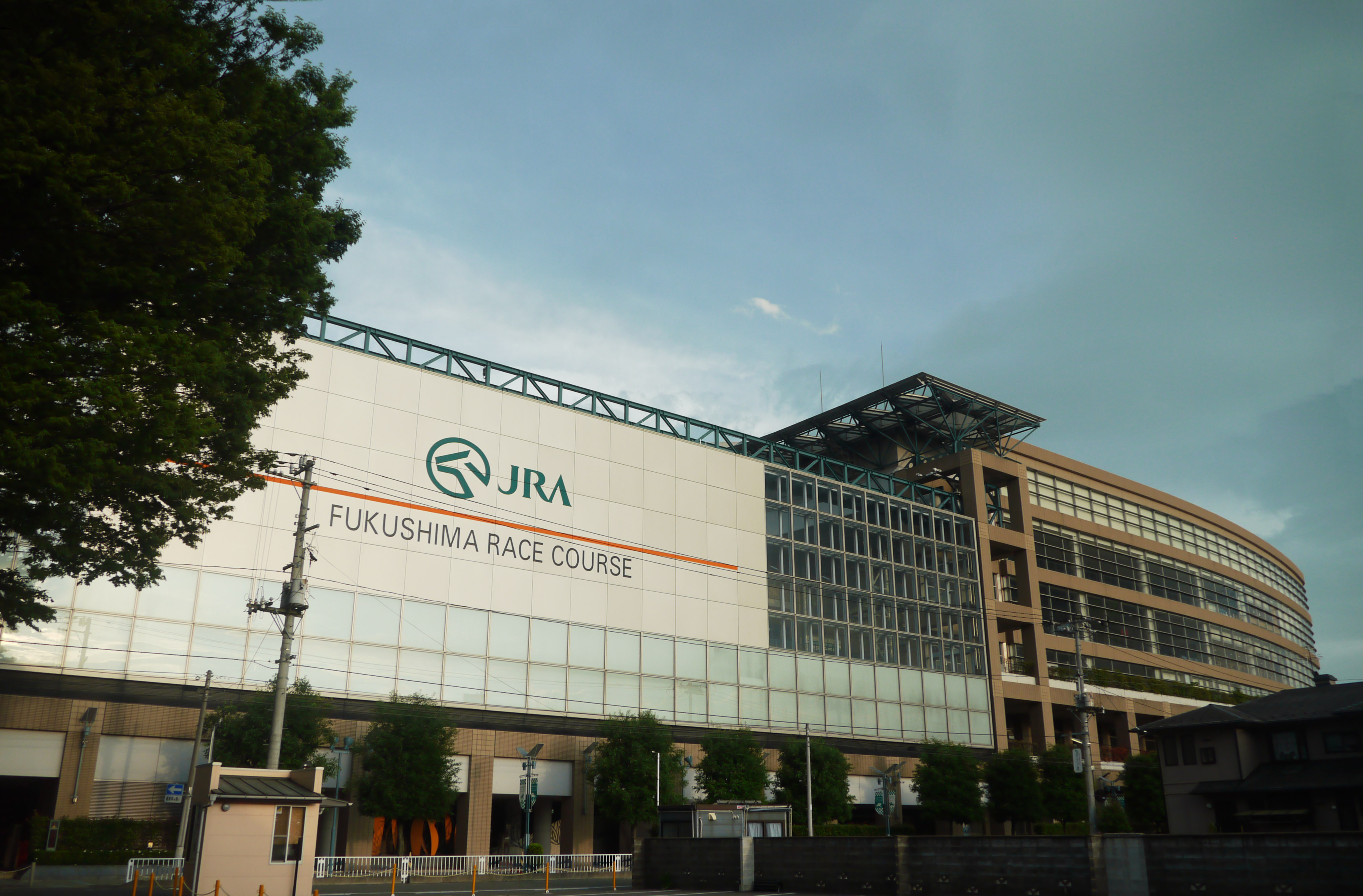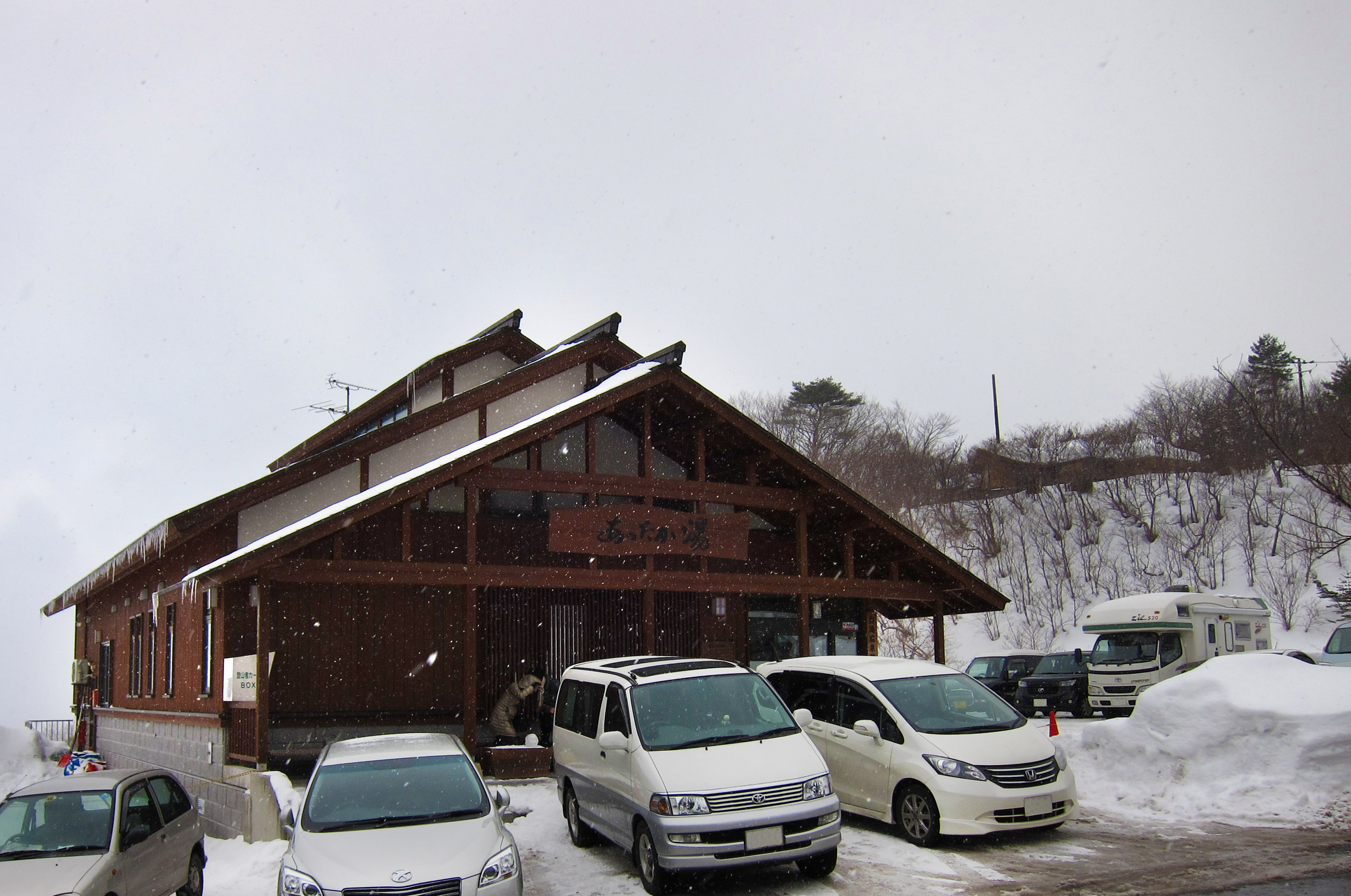|
Fukushima (city)
is the capital city of Fukushima Prefecture, Japan. It is located in the northern part of the Nakadōri, central region of the prefecture. , the city had an estimated population of 275,850 in 122,130 households and a population density of . The total area of the city is . The present-day city of Fukushima partially consists of most of the former Shinobu and Date Districts and a portion of the former Adachi District. The city is located in the Fukushima Basin's southwest area and nearby mountains. There are many onsen on the outskirts of the city, including the resort areas of Iizaka Onsen, Takayu Onsen, and Tsuchiyu Onsen. Fukushima is also the location of the Fukushima Race Course, the only Japan Racing Association horse racing track in the Tōhoku region of Japan. History Early history In ancient Japan, the area now known as Fukushima City was called . The mountain in the middle of the city, present-day Mt. Shinobu, was also formerly called . During the Jōmon perio ... [...More Info...] [...Related Items...] OR: [Wikipedia] [Google] [Baidu] |
Core Cities Of Japan
A is a class or category of cities of Japan, Japanese cities. It is a local administrative division created by the national government.Web-Japan.org"Local self-government", p. 3 retrieved 2012-11-28. Core cities are delegated many functions normally carried out by Prefectures of Japan, prefectural governments, but not as many as Cities designated by government ordinance of Japan, designated cities. To become a candidate for core city status, a city must have a population greater than 300,000 and an area greater than 100 square kilometers, although special exceptions may be made by order of the cabinet for cities with populations under 300,000 but over 200,000. After the abolition of Special cities of Japan, special city status on April 1, 2015, any city with a population above 200,000 may apply for core city status. Application for designation is made by a city with the approval of both the city and prefectural assemblies. History The term "core city" was created by the first c ... [...More Info...] [...Related Items...] OR: [Wikipedia] [Google] [Baidu] |
Population Density
Population density (in agriculture: Standing stock (other), standing stock or plant density) is a measurement of population per unit land area. It is mostly applied to humans, but sometimes to other living organisms too. It is a key geographical term.Matt RosenberPopulation Density Geography.about.com. March 2, 2011. Retrieved on December 10, 2011. Biological population densities Population density is population divided by total land area, sometimes including seas and oceans, as appropriate. Low densities may cause an extinction vortex and further reduce fertility. This is called the Allee effect after the scientist who identified it. Examples of the causes of reduced fertility in low population densities are: * Increased problems with locating sexual mates * Increased inbreeding Human densities Population density is the number of people per unit of area, usually transcribed as "per square kilometre" or square mile, and which may include or exclude, for example, ar ... [...More Info...] [...Related Items...] OR: [Wikipedia] [Google] [Baidu] |
Miyahata Site
is an archaeological site and archaeological park located in what is now part of the city of Fukushima, Fukushima Prefecture in the Tōhoku region of Japan with the ruins of a Jōmon period settlement. The site was designated a National Historic Site of Japan in 2003. Overview The Miyahata ruins contains the overlapping ruins of a settlement from existed from the middle Jōmon period (4500–4000 years ago), late Jōmon period (4000–3000 years ago) to the final Jōmon period (3000–2500 years ago). It is located on the left bank of the Abukuma River, on a river terrace with an altitude of about 60 meters. From 1997, several rescue archaeology excavations were made during the construction of the nearby Fukushima Industrial Park, revealing many remains, including the ruins of a burnt-down dwelling house from the middle Jōmon period and other dwellings from the late Jōmon period. As a result of a survey conducted from 1998, it became protected from development as a National Hi ... [...More Info...] [...Related Items...] OR: [Wikipedia] [Google] [Baidu] |
Abukuma River
The , with a length of , is the second longest river in the Tōhoku region of Japan and the 6th longest river in the country. It is designated as a Classification of rivers in Japan, Class A river. It runs through Fukushima Prefecture and Miyagi Prefecture, rising from springs in the peaks of the Nasu Mountains, Nasu mountains, collecting water from Tributary, tributaries leaving the Ōu Mountains and the Abukuma Highlands, then emptying into the Pacific Ocean as a major river. Its watershed has a area, and about 1.36 million people live in its basin. The Abukuma River flows north through Fukushima Prefecture's Nakadōri region, past the cities of Shirakawa, Fukushima, Shirakawa, Sukagawa, Fukushima, Sukagawa, Kōriyama, Fukushima, Kōriyama, Nihonmatsu, Fukushima, Nihonmatsu, Date, Fukushima, Date, and Fukushima, Fukushima, Fukushima. The portion of the river flowing between Nihonmatsu and Fukushima forms a deep ravine called .Takeda, page 52. Crossing the northern edge of the lo ... [...More Info...] [...Related Items...] OR: [Wikipedia] [Google] [Baidu] |
Jōmon Period
In Japanese history, the is the time between , during which Japan was inhabited by the Jōmon people, a diverse hunter-gatherer and early agriculturalist population united by a common culture, which reached a considerable degree of sedentism and cultural complexity. The name "cord-marked" was first applied by the American zoologist and orientalist Edward S. Morse, who discovered Glossary of archaeology#potsherd, sherds of pottery in 1877 and subsequently translated "straw-rope pattern" into Japanese language, Japanese as ''Jōmon''.Mason, 14 The pottery style characteristic of the first phases of Jōmon culture was decorated by impressing cords into the surface of wet clay and is generally accepted to be among the oldest in the world. The Jōmon period was rich in tools and jewelry made from bone, stone, shell and antler; Jōmon pottery, pottery figurines and vessels; and lacquerware.Imamura, K. (1996) ''Prehistoric Japan: New Perspectives on Insular East Asia''. Honolulu: Unive ... [...More Info...] [...Related Items...] OR: [Wikipedia] [Google] [Baidu] |
Ancient Japan
The first human inhabitants of the Japanese archipelago have been traced to the Japanese Paleolithic, Paleolithic, around 38–39,000 years ago. The Jōmon period, named after its cord-marked pottery, was followed by the Yayoi period in the first millennium BC when new inventions were introduced from Asia. During this period, the first known written reference to Japan was recorded in the Chinese ''Book of Han'' in the first century AD. Around the 3rd century BC, the Yayoi people from the continent immigrated to the Japanese archipelago and introduced iron technology and agricultural civilization. Because they had an agricultural civilization, the population of the Yayoi began to grow rapidly and ultimately overwhelmed the Jōmon period, Jōmon people, natives of the Japanese archipelago who were hunter-gatherers. Between the fourth and ninth centuries, Japan's many kingdoms and tribes gradually came to be unified under a centralized government, nominally controlled by the Empe ... [...More Info...] [...Related Items...] OR: [Wikipedia] [Google] [Baidu] |
Japan Racing Association
The Japan Racing Association () is a public company established in Japan under a law to operate Chūō Keiba (中央競馬 Central horse racing) and to manage racecourses, betting facilities, and horse-training facilities in the country. It was founded in 1954, according to the Horse Racing Law (競馬法 Keiba Hō) and the Japan Racing Association Law (日本中央競馬会法 Nippon Chūō Keiba Kai Hō) and is operated under the strict oversight of the Ministry of Agriculture, Forestry and Fisheries (Japan). Facilities * Racecourses (競馬場 Keiba Jō) - All racecourses in Japan have one oval dirt course inside and one or two turf courses outside. Some also have jump courses. Only three (Tokyo, Niigata and Chukyo) are left-handed (counter-clockwise) and the others are right-handed (clockwise). ** Tokyo Racecourse (Fuchu, Tokyo) ** Nakayama Racecourse (Funabashi, Chiba) ** Kyoto Racecourse (Kyoto, Kyoto, Kyoto) ** Hanshin Racecourse (Takarazuka, Hyogo) ** Sapporo Racecourse ... [...More Info...] [...Related Items...] OR: [Wikipedia] [Google] [Baidu] |
Fukushima Race Course
is a horse racing course located in Fukushima, Fukushima, Japan. It was built in 1918. Courses Fukushima Racecourse has both a turf and a dirt course. It is the smallest racecourse that holds Japan Racing Association The Japan Racing Association () is a public company established in Japan under a law to operate Chūō Keiba (中央競馬 Central horse racing) and to manage racecourses, betting facilities, and horse-training facilities in the country. It was ... races. The turf course measures 1600m. Races can be run on the "A Course" rail setting (on the hedge), the "B Course" setting (rail out 2 meters), or the "C Course" setting (rail out 4 meters). The dirt course measures 1444.6 meters. Notable races Track records Source� 福島競馬場 (Fukushima Racecourse)">レコードタイム表 (Record time table) -> 福島競馬場 (Fukushima Racecourse)*† Reference Time. *Last updated on November 19, 2023. Turf course (2yo) Turf course (3yo+) Dirt course ( ... [...More Info...] [...Related Items...] OR: [Wikipedia] [Google] [Baidu] |
Tsuchiyu Onsen
is a hot spring resort located approximately 16 kilometers west of the city centre of Fukushima, Fukushima, Japan. It is near the source and built along the shores of the Arakawa River, at the foot of Mt. Azuma. Water The majority of Tsuchiyu's hot spring water comes out of the ground as steam at approximately 150 °C then is then piped two kilometers to Tsuchiyu's hotels. The water is largely colorless and clear, has faint traces of sulfur, and has a pH of 6.5. Some hotels receive their water from a separate source, leading to some hotels using water containing sodium bicarbonate Sodium bicarbonate ( IUPAC name: sodium hydrogencarbonate), commonly known as baking soda or bicarbonate of soda (or simply “bicarb” especially in the UK) is a chemical compound with the formula NaHCO3. It is a salt composed of a sodium cat ... or higher levels of sulfur. Facilities There are multiple '' ryokan'' and hotels in the area for guests to stay the night, along with four free '' ... [...More Info...] [...Related Items...] OR: [Wikipedia] [Google] [Baidu] |
Takayu Onsen
is a onsen, hot spring resort in the Zainiwasaka district of the city of Fukushima, Fukushima, Japan. It is in the mountains about 14 km west of Fukushima Station (Fukushima), Fukushima Station. Description Takayu Onsen is halfway up the slopes of Mount Azuma, near the entrance to the Bandai-Azuma Skyline sightseeing road, due west of the centre of Fukushima city. The thermal springs were originally developed 400 years ago in the Sengoku period. The onsen town has approximately 12 Ryokan (inn), ryokan. The soaking pools and baths are open to guests using the lodging as well as non-staying guests (who pay a small fee for use of the Public bathing, bathhouses.) The historic ''Tamagoyu'' bathhouse, is the most well-known. It consists of a small wooden bathhouse with separate soaking pools for each gender. The ''Attaka no Yu'' bathhouse is public, rather than private. In the center of town there is a free outdoor foot bath. Water profile The hot mineral water issues from ten ... [...More Info...] [...Related Items...] OR: [Wikipedia] [Google] [Baidu] |
Onsen
In Japan, are hot springs and the bathing facilities and Ryokan (inn), traditional inns around them. There are approximately 25,000 hot spring sources throughout Japan, and approximately 3,000 ''onsen'' establishments use naturally hot water from these Geothermal gradient, geothermally heated springs. ''Onsen'' may be either or . Traditionally, ''onsen'' were located outdoors, although many inns have now built indoor bathing facilities as well. Nowadays, as most households have their baths, the number of traditional public baths has decreased, but the number and popularity of have increased since the end of World War II, Second World War. Baths may be either publicly run by a municipality or privately, often connecting to a lodging establishment such as a hotel, ''Ryokan (inn), ryokan'', or ''Ryokan (inn)#Minshuku, minshuku''. The presence of an ''onsen'' is often indicated on signs and maps by the symbol ♨, the kanji (''yu'', meaning "hot water"), or the simpler phonet ... [...More Info...] [...Related Items...] OR: [Wikipedia] [Google] [Baidu] |
Fukushima Basin
may refer to: Japan * Fukushima Prefecture, Japanese prefecture **Fukushima, Fukushima, capital city of Fukushima Prefecture, Japan ***Fukushima University, national university in Japan ***Fukushima Station (Fukushima) in Fukushima, Fukushima **Fukushima Airport, airport serving northern and central Fukushima Prefecture, Japan **Fukushima Daini Nuclear Power Plant, another nuclear power plant in Fukushima Prefecture, Japan. Now being decommissioned **Fukushima Daiichi Nuclear Power Plant, a disabled nuclear power plant in Fukushima Prefecture, Japan *** Fukushima Daiichi nuclear accident, 2011 nuclear accident at the Fukushima nuclear power plant, Japan *** Fukushima disaster cleanup, clean-up activities following the nuclear accidents, Fukushima, Japan ** 2016 Fukushima earthquake ** 2021 Fukushima earthquake Hokkaido *Fukushima, Hokkaido Osaka *Fukushima-ku, Osaka, ward * Fukushima Station Nagano Prefecture *Kiso-Fukushima Station *Fukushima-juku, former post town * ... [...More Info...] [...Related Items...] OR: [Wikipedia] [Google] [Baidu] |






